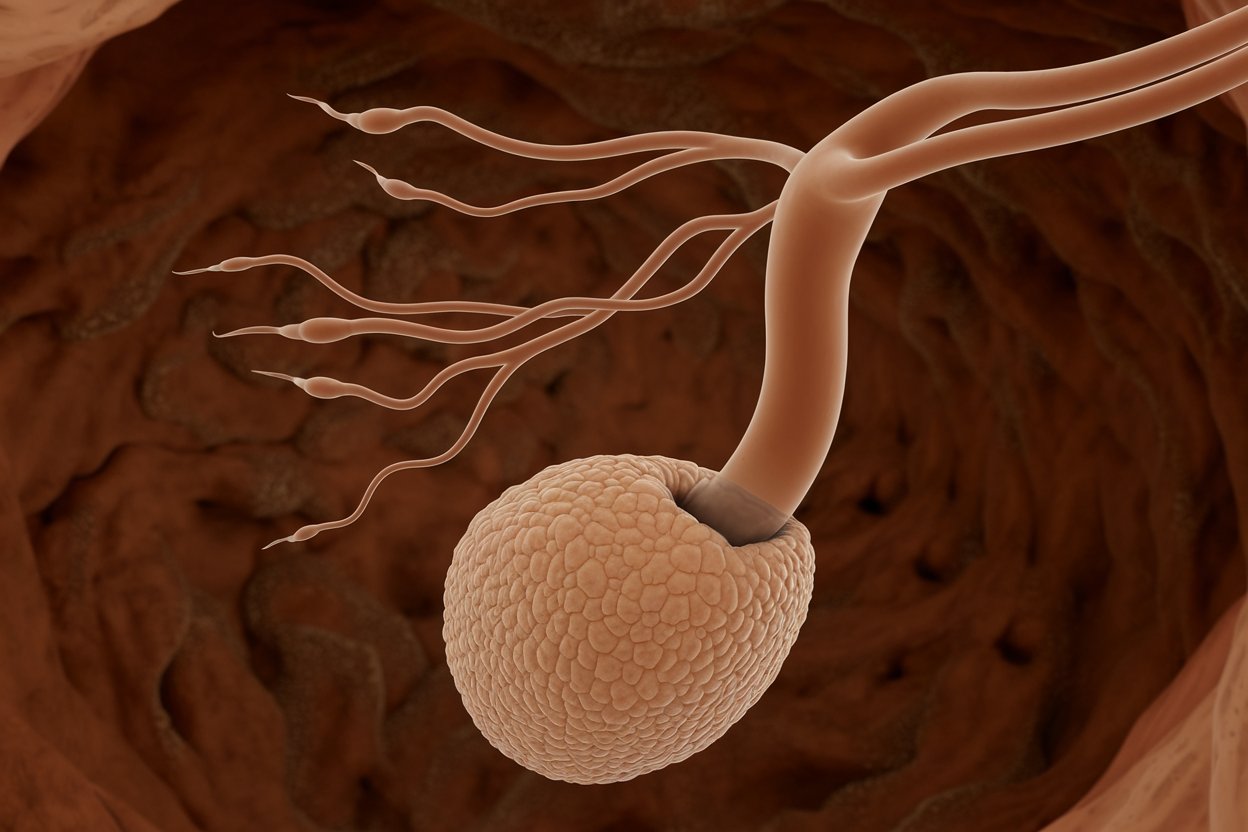
Vas Deferens Aplasia is a rare condition where the vas deferens, the tube that carries sperm from the testicles to the urethra, is absent. This condition can lead to male infertility, as sperm cannot travel out of the testes. Vas Deferens Aplasia often goes unnoticed until a man tries to start a family. It can be associated with genetic disorders like cystic fibrosis. Understanding this condition is crucial for those facing fertility issues. Here, we'll explore 30 facts about Vas Deferens Aplasia to provide a comprehensive overview of its causes, symptoms, and potential treatments.
Key Takeaways:
- Vas Deferens Aplasia is a rare condition affecting men's fertility, often linked to genetic mutations. While it may not show symptoms, it can lead to infertility, but treatments like IVF and genetic counseling offer hope.
- Understanding the causes, diagnosis, and treatment options for Vas Deferens Aplasia can help manage its impact on fertility. Research into gene therapy, advanced ART, and CFTR modulators offers hope for future treatments.
What is Vas Deferens Aplasia?
Vas Deferens Aplasia, also known as Congenital Bilateral Absence of the Vas Deferens (CBAVD), is a condition where the tubes that carry sperm from the testicles are missing. This can lead to infertility in men. Here are some intriguing facts about this condition.
-
Rare Condition: Vas Deferens Aplasia affects approximately 1 in 1,000 men.
-
Genetic Link: Often associated with mutations in the CFTR gene, which is also linked to cystic fibrosis.
-
Infertility: Men with this condition are usually infertile because sperm cannot travel from the testicles to the urethra.
-
Diagnosis: Typically diagnosed through physical examination and genetic testing.
-
No Symptoms: Most men with this condition have no symptoms other than infertility.
Causes and Risk Factors
Understanding the causes and risk factors can help in early detection and management.
-
Genetic Mutations: Mutations in the CFTR gene are the primary cause.
-
Family History: A family history of cystic fibrosis increases the risk.
-
Ethnicity: More common in Caucasians compared to other ethnic groups.
-
Environmental Factors: No significant environmental factors have been linked to this condition.
-
Associated Conditions: Often found in men with cystic fibrosis or carriers of the CFTR gene mutation.
Symptoms and Diagnosis
While the condition itself might not show obvious symptoms, its primary consequence is infertility.
-
Infertility: The most common symptom, often leading to the initial diagnosis.
-
Physical Examination: Absence of the vas deferens can be detected during a physical exam.
-
Genetic Testing: Confirms the presence of CFTR gene mutations.
-
Semen Analysis: Shows low or no sperm count.
-
Ultrasound: Can be used to visualize the absence of the vas deferens.
Treatment Options
Though the condition cannot be cured, several treatment options can help manage infertility.
-
Assisted Reproductive Techniques (ART): Techniques like IVF can help men with this condition father children.
-
Sperm Retrieval: Sperm can be surgically retrieved from the testicles.
-
Genetic Counseling: Important for understanding the risks of passing on genetic mutations.
-
Testicular Biopsy: Can be used to retrieve sperm directly from the testicles.
-
Microsurgical Epididymal Sperm Aspiration (MESA): A procedure to extract sperm from the epididymis.
Living with Vas Deferens Aplasia
Living with this condition involves understanding and managing its implications on fertility and overall health.
-
Emotional Support: Counseling can help cope with the emotional impact of infertility.
-
Support Groups: Joining support groups can provide emotional and practical support.
-
Regular Check-ups: Important for monitoring overall health and managing associated conditions.
-
Healthy Lifestyle: Maintaining a healthy lifestyle can improve overall well-being.
-
Awareness: Raising awareness can help in early diagnosis and management.
Research and Future Directions
Ongoing research aims to better understand and treat this condition.
-
Gene Therapy: Research is exploring the potential of gene therapy to treat genetic causes.
-
Advanced ART: New techniques in assisted reproductive technology are being developed.
-
CFTR Modulators: Drugs that target CFTR mutations are being studied.
-
Stem Cell Research: Potential for using stem cells to generate functional vas deferens.
-
Clinical Trials: Participation in clinical trials can provide access to new treatments.
Final Thoughts on Vas Deferens Aplasia
Vas Deferens Aplasia, a condition affecting the male reproductive system, can significantly impact fertility. Understanding this condition helps in managing expectations and exploring treatment options. Early diagnosis through genetic testing or imaging techniques can provide clarity and guide couples toward appropriate interventions. While it may seem daunting, advancements in medical science offer hope. Treatments like IVF and sperm retrieval techniques have made parenthood possible for many affected by this condition. Knowledge empowers, so staying informed about the latest research and treatment options is crucial. If you or someone you know is dealing with Vas Deferens Aplasia, consulting a healthcare professional can provide personalized guidance and support. Remember, you're not alone in this journey. Many resources and communities are available to offer assistance and share experiences. Stay hopeful and proactive in seeking solutions.
Frequently Asked Questions
Was this page helpful?
Our commitment to delivering trustworthy and engaging content is at the heart of what we do. Each fact on our site is contributed by real users like you, bringing a wealth of diverse insights and information. To ensure the highest standards of accuracy and reliability, our dedicated editors meticulously review each submission. This process guarantees that the facts we share are not only fascinating but also credible. Trust in our commitment to quality and authenticity as you explore and learn with us.
